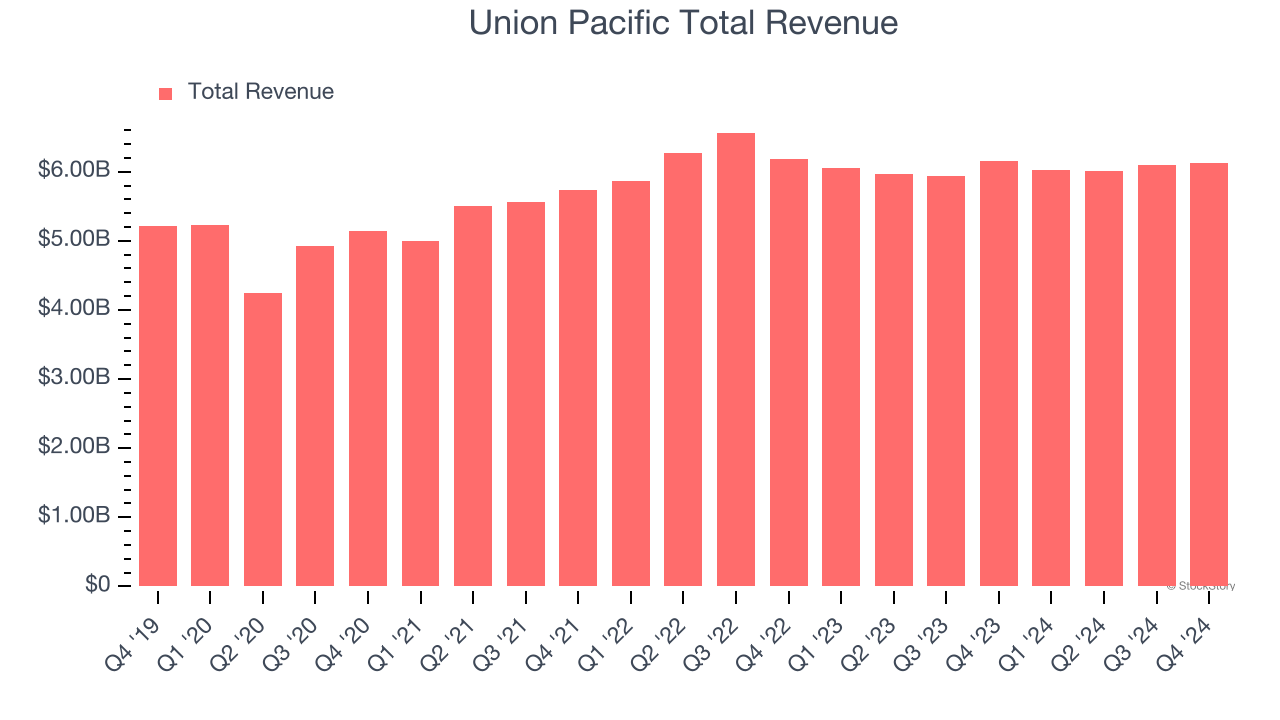
Freight transportation company Union Pacific (NYSE:UNP) will be reporting results tomorrow before the bell. Here’s what you need to know.
Union Pacific missed analysts’ revenue expectations by 0.5% last quarter, reporting revenues of $6.12 billion, flat year on year. It was a satisfactory quarter for the company, with an impressive beat of analysts’ adjusted operating income estimates.
Is Union Pacific a buy or sell going into earnings? Read our full analysis here, it’s free.
This quarter, analysts are expecting Union Pacific’s revenue to be flat year on year at $6.07 billion, improving from its flat revenue in the same quarter last year. Adjusted earnings are expected to come in at $2.73 per share.

Analysts covering the company have generally reconfirmed their estimates over the last 30 days, suggesting they anticipate the business to stay the course heading into earnings. Union Pacific has missed Wall Street’s revenue estimates five times over the last two years.
Looking at Union Pacific’s peers in the transportation and logistics segment, some have already reported their Q1 results, giving us a hint as to what we can expect. CSX’s revenues decreased 7% year on year, missing analysts’ expectations by 1.1%, and Old Dominion Freight Line reported a revenue decline of 5.8%, in line with consensus estimates. CSX traded up 1.4% following the results.
Read our full analysis of CSX’s results here and Old Dominion Freight Line’s results here.
Today’s young investors won’t have read the timeless lessons in Gorilla Game: Picking Winners In High Technology because it was written more than 20 years ago when Microsoft and Apple were first establishing their supremacy. But if we apply the same principles, then enterprise software stocks leveraging their own generative AI capabilities may well be the Gorillas of the future. So, in that spirit, we are excited to present our Special Free Report on a profitable, fast-growing enterprise software stock that is already riding the automation wave and looking to catch the generative AI next.
